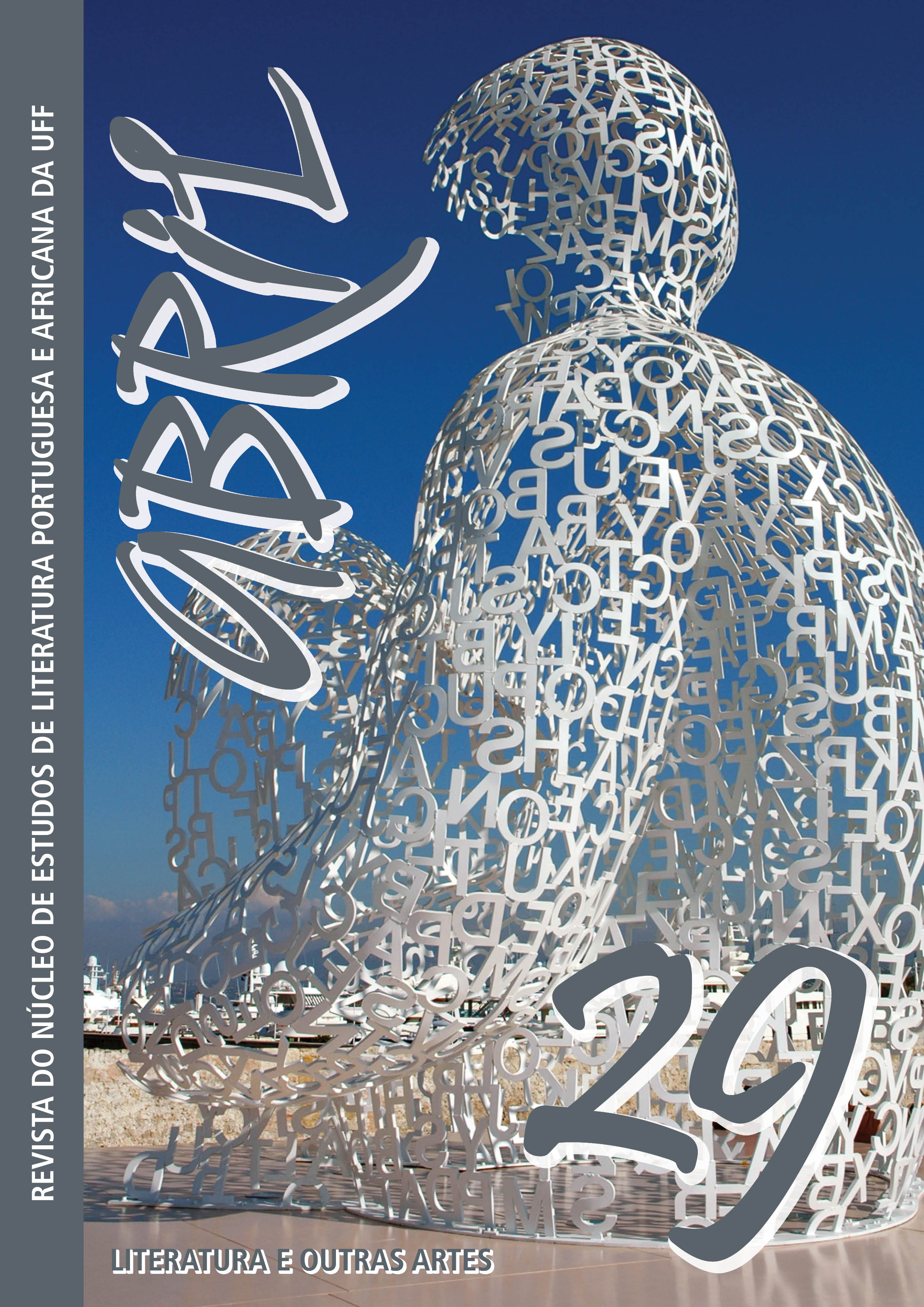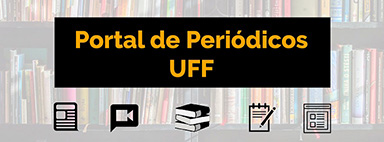The fine weaving of “various patches” in Tocata para dois clarins, by Mário Cláudio
DOI:
https://doi.org/10.22409/abriluff.v14i29.53362Keywords:
Tocata para dois clarins, Mário Cláudio, Contemporary Portuguese literature, Literature and other arts, IronyAbstract
The novel Tocata para dois clarins, published in 1992 by Mário Cláudio, coherent with the whole of the writer’s work, is a place where a fruitful dialogue between literature and other artistic manifestations happens. In it, the story of the couple António and Maria, which refers to the biography of Mário Cláudio himself, revisits the Portuguese Estado Novo period, however, using artifices for the weaving of plots that seek to subvert the harshness of the trumpets of the Salazarist system. This article, by revisiting the novel from the 1990s of the last century, intends to highlight the “various patches” that compose it, demonstrating, from the contemporaneity of the discussions provoked by it, a reflection on the role of literature in representation of the reality and in the creative possibilities of re-elaborating it. These “patchworks”, namely music, photography, sculpture, architecture and literature itself, stand out in the light of consecrated critical readings of the Marioclaudian text, such as those undertaken by Maria Theresa Abelha Alves, Teresa Cerdeira and Dalva Calvão. Furthermore, this proposal is based on theorists of dialogic relations between literature and other arts, such as Karl Erik Schøllhammer, Alberto Manguel and Aguinaldo José Gonçalves, who obviously go by the unavoidable name of G. E. Lessing. Renouncing the novelty of its object of reading, this article recovers texts from the recent past to highlight the metalinguistic, self-reflective and (auto)ironic character of the Portuguese literary production of the post-74, of which Mário Cláudio is a representative.
Downloads
References
ALVES, Henrique Roriz Aarestrup. Tocata: a (des)construção de uma nação. Encontro de Professores Universitários Brasileiros de Literatura Portuguesa, 2001, Belo Horizonte. Encontros prodigiosos: Anais do XVII Encontro de Professores Universitários Brasileiros de Literatura Portuguesa. Belo Horizonte: Fale/UFMG, 2001. v. 01. p. 396-401.
ALVES, Maria Theresa Abelha. Tocata para dois clarins: a fotografia da memória. Boletim do Centro de Estudos Portugueses da UFMG, Belo Horizonte, v. 14, n.16, p. 13-20, 1993.
ÁRVORE – COOPERATIVA DE ACTIVIDADES ARTÍSTICAS, C.R.L. et al. Mário Cláudio: 30 anos de vida literária. 1969–1999. Árvore; Fundação Engenheiro Antônio de Almeida; Livraria Modo de Ler: Porto, 1999.
BACHELARD, Gaston . A água e os sonhos: ensaio sobre a imaginação da matéria. São Paulo: Martins Fontes, 1998.
BARTHES, Roland. O prazer do texto. São Paulo: Perspectiva, 2006.
BORGES, Jorge Luis. Ficções. Tradução de Davi Arrigucci Jr. São Paulo: Cia. das Letras, 2007.
CALVÃO, Dalva. Da alienação à crítica: um duplo olhar sobre o passado. In: JORGE, Silvio Renato (Org.). Literaturas de Abril e outros estudos. Niterói: EdUFF, 2002. p. 45-52.
CALVÃO, Dalva. Narrativa biográfica e outras artes: reflexões sobre a escrita literária e criação estética na Trilogia da Mão, de Mário Cláudio. Niterói: EdUFF, 2008.
CERDEIRA, Teresa Cristina. A tela da dama: ensaios de literatura. Lisboa: Presença, 2014.
CERDEIRA, Teresa Cristina. O avesso do bordado: ensaios de literatura. Lisboa: Editorial Caminho, 2000.
CLÁUDIO, Mário. A Quinta das Virtudes. Rio de Janeiro: Record, 1999.
CLÁUDIO, Mário. Astronomia. Lisboa: Dom Quixote, 2015.
CLÁUDIO, Mário. O Pórtico da Glória. Lisboa: Dom Quixote, 1997.
CLÁUDIO, Mário. Tocata para dois clarins. Lisboa: Dom Quixote, 1992.
COUTO, Mia. “A carta”. In: COUTO, Mia. Cronicando. Lisboa: Caminho, 2013.
DELEUZE, Gilles. Proust e os signos. Tradução: Antonio Carlos Piquet e Roberto Machado. Rio de Janeiro: Forense-Universitária, 1987.
GONÇALVES, Aguinaldo José. Relações homológicas entre literatura e artes plásticas: algumas considerações. Literatura e sociedade: revista de teoria literária e literatura comparada, São Paulo, n. 2, p. 56-68, 1997.
LESSING, G. E. Laocoonte ou sobre as fronteiras da pintura e da poesia: com esclarecimentos ocasionais sobre diferentes pontos da história da arte antiga. Introdução, tradução e notas Márcio Seligmann-Silva. São Paulo: Iluminuras, 1998.
MANGUEL, Alberto. Lendo imagens: uma história de amor e ódio. Tradução de Rubens de Figueiredo, Rosaura Eichemberg, Cláudia Strauch. São Paulo: Companhia das Letras, 2001.
RIBEIRO, Anabela Mota. Mário Cláudio (entrevista). 2004. Disponível em: https://anabelamotaribeiro.pt/mario-claudio-107715. Acesso em: 3 mar. 2022.
SCHØLLHAMMER, Karl Erik. Além do visível: o olhar da literatura. Rio de Janeiro: 7Letras, 2007.
SILVA, Edson Rosa da. O museu imaginário e a difusão da cultura. In: Revista SemeaR. Rio de Janeiro, n. 6, 2002. Disponível em: http://www.letras.puc-rio.br/unidades&nucleos/catedra/revista/6Sem_14.html. Acesso em: 3 mar. 2022.
SILVEIRA, Jorge Fernandes da (Org.). Escrever a casa portuguesa. Belo Horizonte: Editora da UFMG, 1999.
Downloads
Published
How to Cite
Issue
Section
License
Copyright (c) 2022 ABRIL – NEPA / UFF

This work is licensed under a Creative Commons Attribution-NonCommercial 4.0 International License.
I authorize the journal Abril - NEPA/UFF to publish the paper of my authorship/responsibility that I now submit, in case it is accepted for online publication.
Moreover, I declare that this contribution is original, that it was not submitted to any other editor for publication, and I sign the present declaration attesting the truth of all its contents.
The copyright of the works published at the virtual space of the journal Abril - NEPA/UFF are automatically entitled to the journal. Their total or partial reproduction is conditioned to the authors' citations and publication data.

Abril is licensed under a Creative Commons - Attribution-NonCommercial 4.0 International (CC BY-NC 4.0).









